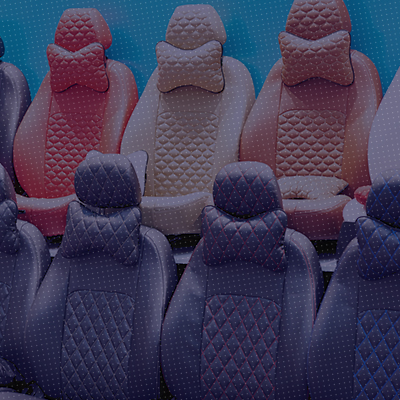The classification of parts and accessories of motor vehicles under the Indian Customs Tariff has been a long-standing issue marked by continuous dilemmas and disputes. The lack of clear and uniform criteria for distinguishing between parts, components, and accessories has led to frequent challenges, particularly in determining the correct tariff headings and the applicability of customs duties or exemptions. As a result, businesses have often found themselves embroiled in legal battles, seeking clarity from authorities and the courts regarding their eligibility for incentives and the appropriate duty structure for their goods.
This article analyses the recent judgment delivered by the Kerala High Court in the case of Auto Fit Car Interiors Pvt. Ltd. v. Union of India & Ors [2025 (1) TMI 24], concerning the classification of car seat cover and steering cover, made up of textile fabrics and cotton handloom fabrics and its entitlement under Merchandise Exports from India Scheme (MEIS). It highlights the Courts interpretation in classification of such car accessories, which adds to the complexity prevailing over such classification disputes.
Auto Fit Car Interiors Pvt. Ltd. (‘Petitioner’) is a company engaged in the business of manufacturing and exporting car interior accessories such as seat covers, upholstery, and other vehicle fittings, and these products were classified by the Petitioner under Heading 8708 as ‘Parts and accessories of Motor Vehicles’. The Petitioner had applied for MEIS benefits for these exports, but the application was rejected on the grounds that these products were not correctly classified under Heading 8708 and thus did not qualify for the scheme.
The primary legal issues in the case were:
1. Classification of car accessories: Whether the car accessories, such as seat covers and other interior modifications, were correctly classified under Heading 8708 or are the same correctly classifiable under Chapter 63 which pertains to made-up textile articles.
2. Entitlement to MEIS benefits: Whether Auto Fit Car Interiors Pvt. Ltd. was entitled to benefits under MEIS scheme for these products, given the classification dispute as products of Chapter 63.
The Kerala High Court ruled in favour of the Petitioner and held that car seat covers are accessories, and thus rightly classifiable under Heading 8708 and eligible for MEIS benefits. In order to reach such a conclusion, the Court referred to the precedent set in Mehra Brothers v. Joint Commercial Officer [(1991) 1 SCC 514], wherein the Apex Court dwelled into the meaning of ‘accessories’ and held that car seat covers, being used for comfort and aesthetic purposes, were deemed to be accessories of car seats rather than standalone textile articles.
Further, the Kerala High Court also emphasized the importance of the functional role of car seat covers in determining their classification and found that as these items are integral to the comfort, convenience, and aesthetic appeal of motor vehicles, and thus are classifiable as accessories under Heading 8708, therefore the export of the products will be eligible for MEIS.
Reliance has been placed on the case of Mehra Brothers, to hold that the car seat covers being accessories are classifiable under Heading 8708. It is interesting to note that the Court in the case of Mehra Brothers was dealing with a question of whether car seat covers are accessories or not, for purpose of levy of sales tax. The decision did not deal with the question of classification of the product but merely dealt with the rate of Salex Tax applicable on the product. Thus, the said case of Mehra Brothers seems inapplicable to the present issue, as even if a product is an accessory, it does not automatically imply that the same will be classifiable under Heading 8708.
In addition to the above, the Kerala High Court has also not considered the decision of the Apex Court in the matter of CCE v. Uniproducts Limited [2020 (372) E.L.T. 465 (S.C.)]. In the said case, the product involved was ‘car matting’ and the question before the Court was whether such car matting, made specifically for motor vehicles, will be classifiable under Heading 5703 as Carpets and other Textile Floor Coverings or will be classifiable under Heading 8708 as parts/accessories of motor vehicles.
The Apex Court in the said case had in detail considered the principles of classification along with the conditions laid down under the HSN Explanatory Notes to Section XVII, for classification of products under Heading 8708. On analysis of the same, the Court held that the car matting is covered under a distinct entry of Heading 5703, and thus, classification under that specific entry will prevail over classification as accessories under Heading 8708. The Court held that Chapter 87 does not contain car mats as a specific entry and merely because the products are exclusively made for cars does not mean the same is classifiable under Heading 8708. Though being of great relevance to the question being considered by the Kerala High Court, this case seems to have not been brought to the notice of the Kerala High Court.
Suffice to say, the recent decision of the Kerala High Court joins a long list of decisions on the issue of whether parts/accessories of automobiles are classifiable under their own distinct headings (Suzuki Motors Gujarat Private Limited v. Commissioner of Customs [2022 (6) TMI 1089-CESTAT, Ahmedabad], Hero Motorcorp Limited v. Commissioner of Customs (NS-I), Raigad [2022 (379) E.L.T. 214 CESTAT, Mumbai], etc.) or as parts accessories of automobiles (G.S. Auto International Ltd. [2003 (152) E.L.T. 3 [Supreme Court], Cast Metal Industries Pvt Ltd. [2015 (325) E.L.T. 471 (SC)], etc.). However, far from being settled, the issue is growing muddier with each decision passed.
[The authors are Partner and Senior Associate, respectively, in Customs practice at Lakshmikumaran & Sridharan Attorneys, Mumbai]





